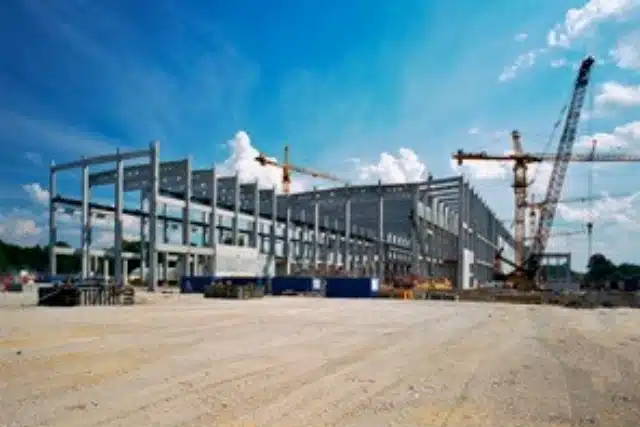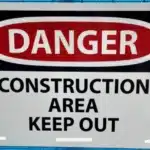Construction sites are inherently hazardous environments where safety must be a top priority. Regular safety meetings are essential for maintaining a safe workplace, reducing the risk of accidents, and ensuring that all workers are aware of potential hazards and how to mitigate them. These meetings, often called toolbox talks, provide an opportunity to discuss potential hazards, review safety protocols, and ensure everyone knows their responsibilities. Regular safety meetings help reinforce the importance of safety practices, promote awareness, and encourage open communication about safety concerns. Addressing specific risks and updating workers on any changes in procedures or regulations, these meetings are vital in preventing accidents and injuries on the job site. Here are 15 crucial topics to address at your upcoming construction safety meetings.
- Personal Protective Equipment (PPE): PPE is the first line of defense against workplace injuries. It is essential to regularly review the types of PPE required for various tasks, including helmets, gloves, safety glasses, high-visibility vests, ear protection, and steel-toed boots. Ensure that all workers understand the importance of PPE, how to wear it correctly, and how to maintain it. Regular checks should be conducted to ensure compliance.
- Fall Protection: Falls are one of the leading causes of injuries and fatalities in construction, and fall protection is one of the most frequently cited OSHA violations. Discussing fall protection measures, such as full body harnesses, fall arrest systems, self-retracting lifelines (SRLs), guardrails, and safety nets, is critical. Emphasize the importance of using fall protection equipment correctly and consistently, especially when working at heights. Regular training on properly using and inspecting fall protection gear can save lives.
- Ladder and Scaffolding Safety: Improper use of ladders and scaffolding can lead to serious injuries. Safety meetings should cover the correct setup, use, and maintenance of ladders and scaffolds. Discuss weight limits, the importance of stable ground, and the necessity of securing ladders. For scaffolding, ensure workers understand the need for guardrails, proper planking, and safe access.
- Electrical Safety: Electrical hazards are common on construction sites. Addressing safe practices when working with or near electrical systems is vital. Topics should include using grounded and insulated tools, the importance of lockout/tagout procedures, and the dangers of working in wet conditions. Educate employees about the importance of reporting electrical malfunctions or potential risks. Workers should be trained to recognize electrical hazards and respond appropriately.
- Tool and Equipment Safety: It is essential to ensure that all tools and equipment are used safely. This includes hand tools, power tools, and heavy machinery. Discuss proper operation procedures, regular maintenance, and the importance of using the right tool for the job. Emphasize the need to inspect tools before use to ensure they are in good working condition.
- Hazard Communication: Workers must know the potential hazards on site and how to communicate them effectively. This includes understanding Safety Data Sheets (SDS) for hazardous materials and knowing the site-specific communication procedures. Regularly review how to report hazards, near misses, and incidents to ensure swift and effective responses.
- Good Housekeeping: Good housekeeping practices are crucial for preventing accidents. Discuss the importance of keeping the site clean and organized. This includes proper material storage, regular waste disposal, and clear walkways. A tidy site reduces the risk of trips, slips, and falls and can decrease fire hazards with proper material storage.
- Fire Safety: Fire safety protocols must be a regular topic of discussion. Address the proper handling and storage of flammable materials, the importance of not smoking on site, and the use of fire extinguishers. Ensure that workers are familiar with emergency evacuation procedures and the location of fire exits and assembly points.
- Emergency Response Procedures: Preparedness for emergencies can significantly reduce their impact. Discuss the site’s emergency response plan, including evacuation routes, emergency contacts, and the location of first aid kits and defibrillators. Conduct regular drills to ensure all workers know how to respond in an emergency.
- Heat Stress and Cold Exposure: Construction workers are often exposed to extreme weather conditions. Addressing the risks associated with heat stress and cold exposure is essential. Discuss the signs and symptoms of heat exhaustion, heat stroke, hypothermia, and frostbite. Provide guidelines for preventing these conditions, such as staying hydrated, taking breaks, and wearing appropriate clothing.
- Traffic Control: Traffic control is vital on sites where vehicles and heavy machinery operate. Discuss safe practices for operating vehicles and machinery and pedestrian safety. Review the site-specific traffic management plan, including designated routes, speed limits, and spotters and flaggers.
- Confined Space Entry: Working in confined spaces presents unique hazards, including limited airflow, toxic atmospheres, and the risk of entrapment. Review the procedures for safely entering and working in confined spaces, including using gas detectors, ventilation equipment, and emergency retrieval systems. Ensure that workers are trained in confined space rescue procedures.
- Hazardous Materials Handling: Proper handling, storage, and disposal of hazardous materials are crucial for site safety. Discuss the types of hazardous materials on site, their associated risks, and the precautions workers must take. Review the proper use of personal protective equipment and the importance of following the guidelines outlined in the Safety Data Sheets (SDS).
- Ergonomics and Proper Lifting Techniques: Construction work often involves repetitive motions, heavy lifting, and awkward postures, leading to musculoskeletal injuries. Discuss the principles of ergonomics and how to apply them to construction tasks. This includes proper lifting techniques, the use of lifting aids, and the importance of taking breaks to reduce strain.
- Mental Health and Well-being: Mental health is important to worker safety and productivity. Address the signs of stress, anxiety, and depression and provide support resources. Encourage open communication and foster a supportive work environment. Highlight the importance of work-life balance and the availability of mental health services.
Addressing these topics regularly in construction safety meetings can create a safer, more productive work environment. By ensuring that all workers are informed, trained, and vigilant, the risk of accidents and injuries can be significantly reduced. Construction teams can significantly reduce the risk of accidents and injuries by focusing on critical areas such as fall protection, equipment safety, and emergency preparedness. Safety should always be the top priority on any construction site, and safety meetings are a key component in maintaining secure and healthy workplaces.
If you need assistance with safety meetings or are looking for a safety professional to support your upcoming construction project, contact Safety Consulting Specialists. We support construction projects nationwide through our network of site safety professionals, site safety audits, customized safety training, site-specific safety programs, and expert witness services. At Safety Consulting Specialists, we are committed to partnering with you to create a culture of safety that protects your workers and enhances the success of your projects. Together, we can build a safer future for the construction industry. Contact us today at 919-417-2139!


